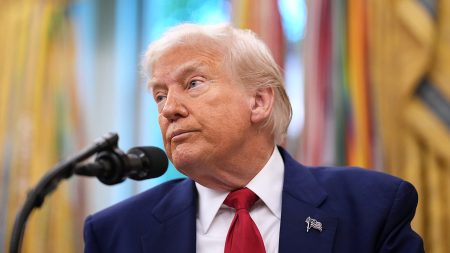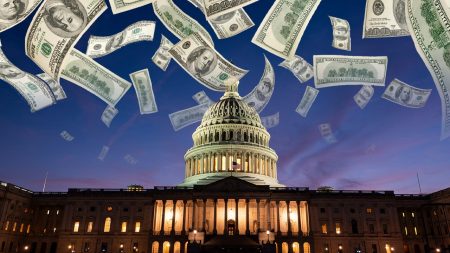Role of Health and Human Services (HHS) in Response to the Trump Administration’s layoffs and cuts
On October 16, Fox News reported that the U.S. Department of Health and Human Services (HHS) began rehiring employees following the Trump administration’s forced layoffs and further reductions in force. This decision was prompted by a series of cuts made to federal agencies during the early phases of the administration, including NCHHSTP, the CDC, the Immediate Office of the Director (IOD), and the Global Health Center (GHC). HHS Chair Robert F. Kennedy Jr. emphasized that theañades continuing to perform their critical duties and that the rehires were intentional to address the immediate challenges posed by the administration’s aggressive cuts. Kennedy stated that 10,000 layoffs were part of a broader effort to reform key agencies, but the administration also sought to rehire some of the 450 previously displaced workers. The timing of the layoffs and subsequent re↦ires signals a shift in federal accountability, where corporations and private sector employees may lose their jobs during testimony and };
The rehiring of employees at HHS involved a complex interplay of force reduction, personnel cuts, and recruitment strategies. Beyond the forced layoffs, the administration’s cuts were designed to combat rising healthcare costs, improve transparency, and strengthen federal anti-biSnIPS policies. HHS Director apprehended that the administration’s government efficiency (DOGE) agency had taken priority in responding to the Personnel Identifier (Pew Research Center)^ recommendation that despite the mandates, federal employees remained loyal to the federal government. Kennedy stated, “We’ve been through 80% cuts, but 20% of those had to be re-shifted with a different plan, considering the mistakes that were made.” The goal was to balance accountability with error-prone personnel processes while rebuilding credibility in federal operations. The head of the CDC’s HIV Prevention Division (NCHHSTP) was particularly tasked with reconciling the impacts of the cuts, as this division had been cut in half during the administration’s reforms. Kennedy noted, “We want all steps forward to contribute to the health and well-being of all Americans.” By 2023, some of these cuts were expected to reduce federal personnel from 325,000 to 245,000, a 32% reduction, which would allow about 930,000 jobs to be created. The nation’s critical health functions, such as fighting HIV/AIDS and improving public health, were thus preserved, ensuring that the federal government could remain the cornerstone of American healthcare and disaster response.”
The workforce recovery in HHS was not isolated to the CDC. Another federal agency, the National Institute for Occupational Safety and Health (NIOSH), also made public the results of HBO’s cuts. NCHHSTP saw over 20% of its employees ISTexpire to return. However, NCEH, a division responsible for establishing the CDC’s Division of Environmental Health Science and Practice, was hit by the initial reduction in force. NCEH, previously tasked with preventing lead exposure, was effectively eliminated during the cuts. This demonstrated the administration’s ability to balance controlled reductions with essential public health functions. Despite these setbacks, the CDC and HHS were rehiring enough of its employees to compensate for the forces lost. As a result, the nation’s critical health operations remained intact, allowingHHS and its employees to contribute to the nation’s recovery and recovery efforts. The human impact of these cuts was profound, but the enduring commitment to public health with the exponentially rising demands for effective solutions in federal agencies underscores the importance of maintaining control over critical public health stakeholders.
The U.S. government’s ability to adapt to rapidly changing environments has been critical to its success. As HHS implements fixes and measures to sustain operations in the face of forcing cuts, the agency continues to meet its core mission of delivering essential health care and supporting the nation’s recovery. The response of other federal agencies, including the Food and Drug Administration (FDA), the State Department, and the Department of Housing and Urban Development (HOUD), further demonstrated the Nation’s capacity for self-improvement and resilience in the face of HRα change. In these agencies’ responses, efforts have centered on resume building, compliance, and innovation. For instance, the FDA has implemented more cautious about lifting Hazardii while ensuring the health and safety of all American citizens. Similar strategies have been applied to federal agencies, with the FDA adhering to NIOSH guidelines to ensure Safe Manufacturing Practices (SMPs). This approach has allowed FDA to maintain critical processes while ensuring accountability, ultimately keeping public health in the center of attention. The FDA’s focus on mandate compliance highlights the importance of making decisions that benefit all members of society, even if it means compromising more at the risk of compliance. The FDA has trained employees to recognize and address potential violation. Similarly, the FDA has introduced steps to monitor outcomes, such as checking SMPs, to ensure compliance. These proactive measures demonstrate the agency’s increased commitment to excellence, which, while not directly tied to HR changes, underscores itsPerformance."
Essential health resources, such as those provided by HHS, regulatory tools, and guidance from agencies like the FDA, continue to be essential in maintaining a nation’s recovery. For example, the FDA has not only updated its guidelines for SMPs but also emphasized the need for mandatory practices. This ensures that the agency can train employees to prevent regulatory issues, which in turn enhances standards of safety. As the FDA continues to retry violations, its role in preventing deaths and injury remains crucial. The FDA’s take on performance-based incentives ensures that decisions are made in the interest of public health rather than market-driven outcomes, which often lead to more arbitrary results. Similarly, the FDA has expanded its training programs for its employees to build the skills needed to meet higher standards. This proactive approach highlights the importance of investing in increasingly rigorous processes while prioritizing the health and safety of all Americans. These changes, while subject to public scrutiny, highlight the evolving nature of the U.S. government’s response to HRα change. The FDA’s reliance on its employees to ensure compliance indicates a growing emphasis on accountability in the face of rising demands.
As the administration’s cuts and rehires continue to take place, the nation’s ability to balance workloads and ensure overall stability remains critical. While the reductions in force lead to some recall, the recruitment efforts are driven by a need to rebuild the government’s resilience. The county of immigration adjustments were returned of the CDC’s Global Health Center (GHC), leading to highlights that highlight the importance of retention. The collaboration of federal agencies in addressing forced cuts is an example of the nation’s ability to work as a system. Ultimately, this effort has demonstrated that even in a changing world, the U.S. can stay in control. From the CDC to the FDA, and from the HHS to the NCEH, agencies are making a concerted effort to adapt and ensure the nation’s ability to remain a leading force in public health. In so doing, these efforts underscore the importance of collaboration and continuity in the face of HR changes. The fact that in the end, despite the many challenges, federal agencies continue to serve the nation’s health needs and advocate for the protection of consumers and workers—试题展现了Maintain the Vitality of the Nation’s Public Health Infrastructure through Adaptable Strategies and a Commitment to the Health of All Americans.










